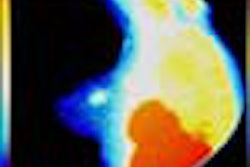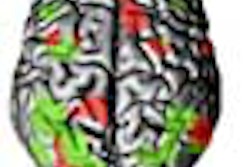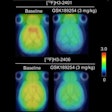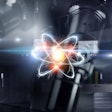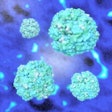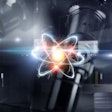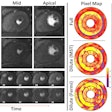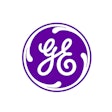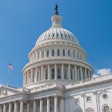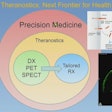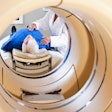"Wars are not fought to decide who is right, but rather to decide who is left." -- unknown
Year after year, radiologists continue to lose procedures to medical subspecialists they believe are less qualified to perform them. For radiologists, it's not just the economics of the thing that's galling. Patient care can suffer -- sometimes disastrously -- when nonradiolgists miss subtle pathologies on imaging exams, for example. But radiologists know that much of the war has already been fought and lost.
As for what’s left, both the battlefield and the likely outcome depend on the procedure or modality under siege. Yet according to turf watchers at last week's American Society of Emergency Radiology meeting in San Francisco, radiologists are letting some of the best opportunities slip right past the troops. There’s time to retake lost territory, they say, if radiologists shift their focus to patient care and training, become more entrepreneurial, and work to change perceptions of what radiologists do.
Ultrasound
Since its clinical introduction around 1975, ultrasound has become a billion-dollar enterprise, and the most widely available imaging modality on earth, according to Dr. Gretchen Gooding, professor of radiology at the University of California, San Francisco. Its range of applications -- including chest, musculoskeletal, coronary and vascular, obstetric and gynecologic, transcranial, penile and transrectal, intraoperative and interventional, veterinary and ophthalmologic -- continues to grow each year.
"The trend has been that physical exam skills are diminishing, and ultrasound is replacing the basic physical exam," Gooding said at a presentation on Friday. "Because it is nearly universally available, the question is who should do it and who should interpret it."
A key factor in the use of ultrasound by nonradiologists has been the vastly improved image quality that has occurred over the years, and the growing range of equipment types. Each type of ultrasound technology, from gray scale to power Doppler to 3-D, requires different skills for interpretation. So the question isn’t about ultrasound’s usefulness or availability, Gooding said.
"What we are all concerned about is that poorly executed studies, poorly read, do the patient a disservice," she said. "And they are at risk of malpractice."
Part of the problem relates to differing standards for ultrasound accreditation, she said.
For medical imaging specialists, the American Institute of Ultrasound in Medicine requires a minimum of three months’ experience, with 500 exams performed under the supervision of a qualified practitioner, she said.
The American College of Cardiology requires six months of training and experience, with 300 echocardiograms performed under qualified supervision. Yet the American College of Emergency Physicians requires far less: 45 hours of didactic instruction followed by 150 supervised studies divided evenly between abdominal, obstetric-gynecologic, and cardiac.
In an effort to address these discrepancies, the American College of Radiology has developed an ultrasound laboratory accreditation program for both general and vascular applications. While the programs are expensive to maintain, third-party payors are beginning to require accreditation as a condition for payment, Gooding said.
Radiologists need to take an active role in sonographic studies, since sonographers do not have the training and education to make many diagnoses, and can miss significant findings, she said. In order to gain more control over diagnostic ultrasound, radiologists must:
- Maintain high training and education levels in their areas of expertise.
- Be available for night and weekend coverage, or form associations that can do so.
- Maintain accredited sonographic laboratories.
- Work to improve training for qualified technologists.
Cardiovascular disease
Cardiovascular disease is a watershed area that is constantly shifting between radiologists and cardiologists, according to Dr. Charles Higgins, a cardiac MR expert and professor of radiology at the University of California, San Francisco.
"As we know, cardiology is a very aggressive practice, and the number of people being trained exceeds the total number of radiologists being trained," Higgins said. "There has been some competition over the years, but I think a lot of the turf has been decided."
Higgins made the following observations about specific areas:
- Echocardiography is now clearly within the realm of cardiology.
- Radiologists and cardiologists still participate jointly in nuclear imaging. Frequently one or the other specialty is doing it, but in academic institutions it’s often being done in cooperation.
- Coronary angiography, pioneered by radiologists, is now performed nearly 100% by cardiologists.
- CT is still controlled by radiology, but cardiologists are becoming more active here too, especially in coronary artery calcium screening. Such screening tends to be an entrepreneurial activity in many cities, where cardiologists are drawn into it for interpretation and for referral of their patients.
- Cardiovascular MR has traditionally been a radiology technique. Recently, however, vendors have developed dedicated cardiac MR scanners and marketed them actively to cardiology groups.
Currently the most active turf incursion is in cardiovascular MR, Higgins said.
"The major current interfaces in cardiac diagnosis are cardiovascular MR, coronary calcium screening, and the question of whether or not one uses trans-esophageal echocardiography, MR, or fast CT for the diagnosis, especially [for suspected] thoracic-aortic abnormalities."
More often than not, the strength of the "union" or association group is the deciding factor in turf wars, Higgins said, and group strength drives accreditation standards as well.
For example, the North American Society of Cardiac Imaging, comprised almost exclusively of radiologists, is much smaller than the Society of Cardiac Magnetic Resonance (SCMR), he said. The latter was formed about five years ago, but had 650 members at its last meeting, including about 60% cardiologists, 30% radiologists, and 10% scientists and others.
"(SCMR) has taken upon itself the job of deciding accreditation of cardiac MR. As you know, the American College of Radiology accredits MR laboratories, but does not specify who is competent to interpret studies from such a lab," Higgins said. The SCMR has already published written guidelines regarding what is an adequate cardiac MR facility and who is competent to evaluate the exams, Higgins said.
"[The organization] is a major factor determining who occupies the turf and who can put the footprints on that turf," he said.
Acute myocardial ischema (MI) and pulmonary embolism (PE) are the two most common emergency room situations, he said. For MI, the choices are coronary angiography, nuclear echo-imaging, and to a growing extent, MRI. For suspected PE, CT is rapidly evolving as the major modality, a procedure still controlled by radiologists.
"Finally there is thoracic-aortic imaging, where the question is trans-esophageal echocardiography -- attractive because it’s portable and can be brought to the emergency room -- Fast CT, or in some instances MRI."
Next page: Vascular and interventional radiology
1,2
Copyright © 2001 AuntMinnie.com






